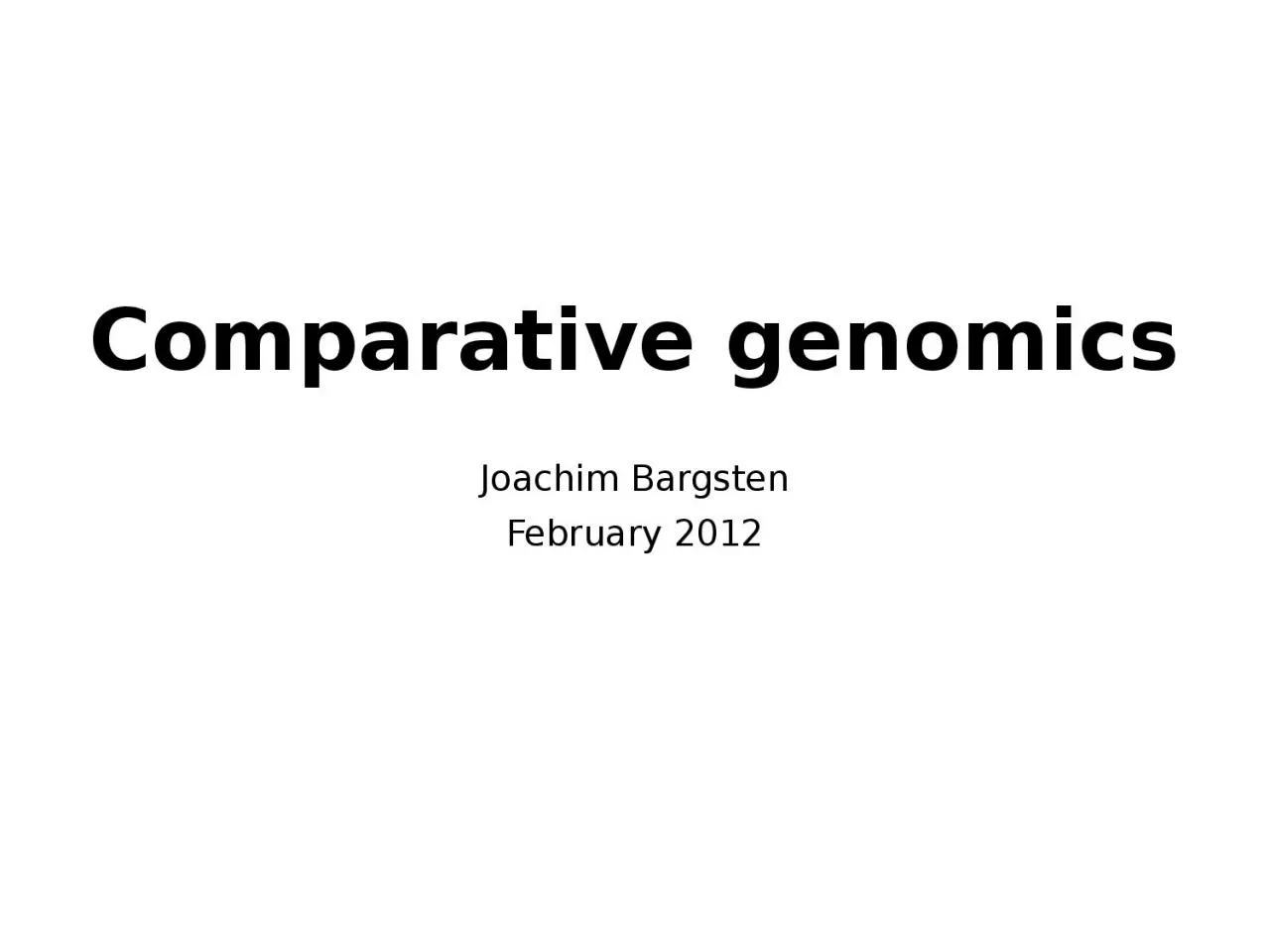

February 2012 Comparative genomics The study of the relationship of genome structure and function across different biological species or strains Why should we do this How are we going to do this ID: 1047305
Download Presentation The PPT/PDF document "Comparative genomics Joachim Bargsten" is the property of its rightful owner. Permission is granted to download and print the materials on this web site for personal, non-commercial use only, and to display it on your personal computer provided you do not modify the materials and that you retain all copyright notices contained in the materials. By downloading content from our website, you accept the terms of this agreement.
1. Comparative genomicsJoachim BargstenFebruary 2012
2. Comparative genomicsThe study of the relationship of genome structure and functionacross different biological species or strains.Why should we do this?How are we going to do this?
3. Study evolutionResolveDifferencesMechanismTree of lifehttp://www.tolweb.org/tree/
4. MotivationTransfer knowledge from and to simpler model organismsHumanC. elegans
5. Motivation
6. OverviewMolecular phylogeneticsMultiple sequence alignmentPhylogenetic tree estimationOrtholog predictionGenome rearrangementsLarge scale inversions, deletions and translocationsSynteny & CollinearityStructural variationsPresented by Lin Ke
7. Molecular phylogeneticsThe use of molecular data to establish the relationship between species, organisms or gene familiesHomologysequences that share common ancestry.This is a all or nothing relation.Sequences are never “a bit” homologous.Orthologs: homologs in different species derived by a speciation eventParalogs: homologs in the same or different species derived by a duplication event
8. Homology(co-)orthologslastcommonancestor
9. Homologyinparalogslastcommonancestor
10. Homologyoutparalogslastcommonancestor
11. Phylogenetic tree estimationHow do we estimate a phylogenetic tree?Identify evolutionary conserved regionMultiple sequence alignmentMAFFTEstimate the phylogenetic treePhyML
12. Phylogenetic tree estimationMultiple sequence alignment
13. Phylogenetic tree estimation
14. Phylogenetic tree estimationInfer evolutionary relationshipsbetween species and genes/proteinsRooted treeOrder of evolutionaryeventsUnrooted treeEvolutionary relationshipsbetween descendants
15. Non-coding regionsPhylogenetic footprintingDistantly related speciesPhylogenetic shadowingClosely related speciesUse sequence comparison andmultiple alignment to find exonsand non-coding functional regionsE.g. Transcription factorbinding sites
16. What can we do with it?Gene annotationGene or protein function predictionIdentify non-coding elements in the genomeSpecies phylogenyGenome evolution
17. Genome alignmentPairwise alignmentMatch chromosome sequence from species A to species B
18. Genome alignment – dot plot
19. Dot-plot chromosome 2L tomato - potato
20. Synteny & collinearitySyntenygene loci are on the same chromosomeConserved syntenygene loci are on the same chromosome in different speciesCollinearityThe order of the gene loci is preserved across species
21. inverted
22.
23. ResourcesComparative genomics plantsPlant Genome Duplication Databasehttp://chibba.agtec.uga.edu/duplication/Plazahttp://bioinformatics.psb.ugent.be/plaza/
24. Exercisessh –X USERNAME@137.224.100.212cd /mnt/geninf15/work/bif_course_2012/comparative_genomics_jwbless assignment.txtkwrite assignment.txt